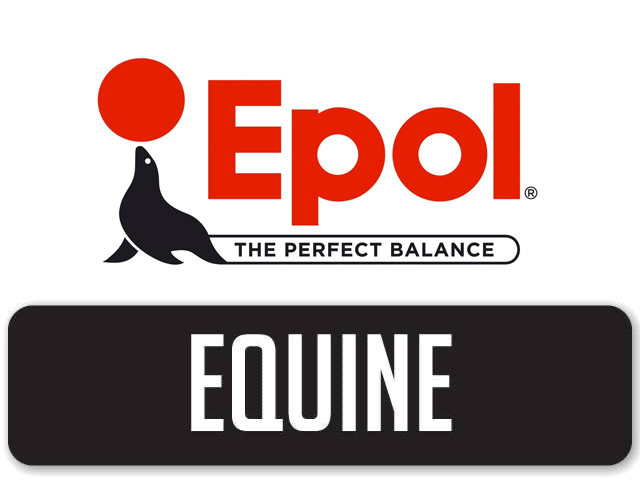When horse owners ask about a “low-carb” diet, many are unsure of what the term means or why they should consider this diet.
When considering the term “low carbohydrate diet” it becomes clear that it would be more accurate to refer to a “low NSC diet” as these are the carbs necessary to be kept in moderation.
NSC stands for ‘non-structural carbohydrates‘ and is the combination of starch and sugar.
So what are carbohydrates?
Firstly, when discussing carbohydrates, it should be noted that there are two types of carbohydrates found in the horse’s diet:
Fibre carbohydrates are known as Structural Carbohydrates and, for the most part, are provided by the grass and hay that the horse consumes. These carbohydrates are essential for the horse’s well being, and must always be provided. An equine diet, thus, can never be totally carbohydrate free. The energy provided by structural carbohydrates is slow releasing energy and thus a ‘cooling” source of energy.
On the opposite side, sugars and starches are classified as Non-Structural Carbohydrates (NSC) and, for the most part, are provided by grain in the horse’s diet. Most of the NSC are broken down in the small intestine to become glucose, which is a simple sugar that provides energy. After being absorbed into the bloodstream, glucose is transported to various tissues of the body where it is used as fuel immediately or stored as glycogen or as fat. The glycogen is stored in the muscles or liver where it can be released as fuel when needed. NSC are commonly referred to as fast release energy sources and thus can cause some horses to become ‘’hot”
Are NSC really that bad?
NSCs such as those primarily from Glucose are very important in enabling the horse to function properly, as this is the only fuel that can be used by the brain; it is also used to a large extent by the hooves, and it is the only substance that can be used for making glycogen. Studies have shown that horses that use up all their glycogen and are not provided glucose to replenish the glycogen stores show greatly reduced performance capabilities. So, glucose is vital to the health and well-being of the horse. NSC’s, thus, are not a definite no go, but should be provided in moderation.
It is known that too much NSC (particularly starch) in a horse’s feed can cause digestive problems. Ideally, the NSC should be digested only in the small intestine, but if a large meal containing huge amounts of starch is fed, it can overflow into the large intestine causing digestive issues such as colic or laminitis.
Which horses need a Low NSC
Most horses cope well with an average level of NSC in their diet but certain horses require a much lower level of NSC to remain in a healthy condition.
These horses include those suffering from Laminitis, Cushing’s, Insulin-resistance, Exertional Rhabdomyolysis (tying-up), Ulcers, Colic and even to some extent horses than can be extremely “hot”.
It is recommended that horses with these conditions be supplied with an alternative form of energy, that is, a diet with a low level of NSC.
So, if there is a need to reduce sugars and grains what should be used instead?
The answer is both fats (in the form of oils) and fibre (such as good quality hay, grass, grass cubes, quality chaffs, and super fibres such as beet pulp, soya hulls etc). Both these ingredients are capable of providing adequate energy to the working horse and they have the added advantage of also being much healthier for the equine gut.
Fats are a good alternative source as they are calorically dense and enter the muscle’s metabolic pathways at different sites than glycogen, allowing the provision of energy without using NSC
When choosing a horse feed, it is important to use feeds which do not rely solely on the energy from sugars alone, but rather from raw materials with a combination of fast (NSC), medium (fat) and slow (fibres) releasing energy. Each ingredient is digested at different rates and energy is subsequently released into the bloodstream more gradually. This helps to prevent any insulin spikes and ensures more sustained energy for the horse which is conducive to peak performance.
Equus products contain high levels of fats and fibres allowing for easy use of a “low carb” diet should this be necessary.
What are the cost implications?
Ingredients such as cereal grains and sugars are generally cheaper and thus many “basic brands” which contain such ingredients may seem economical but, more often than not, these feeds need to be fed in larger amounts which results in any price advantage being lost.
When feeding fibre as the base of the diet, it must be of good quality and this may come at a slightly higher price, however, the digestibility of a quality roughage will be much greater which results in the horse receiving more nutrients per kg than from poorer quality roughage.
Should a horse have a medical condition, paying a slighter higher price for quality fibre remains preferable to high vet bills.
How does one know how much NSC is in a concentrate feed?
This will depend on the feed brand. Companies focusing on NSC values will list these, while others may need to be contacted to get this information.
Apply caution when comparing NSC values between brands and remember to compare apples with apples. Some companies may specify as grams per kg (g/kg) and some by using a %. This is, however, easy to convert.
For example: 200 g/kg NSC is the same as 20%.
Keep in mind that some companies may only provide a Starch value. While this is useful in determining how much starch is in the product (and how much of the feed is made up of grains and grain by-products) but this value does not disclose how much sugar it contains.
A low starch food may have a high sugar content resulting in a high NSC feed. Similarly, a low sugar feed may be high in starch also resulting in a high total NSC. It is therefore important to have both components of the equation.
NSC= Sugars + starch
The following provides a good indication of the difference in levels of NSC:
NSC > 35% or 350g/kg = High
NSC 35-20% or 350g-200g/k = Relatively low
NSC < 20% or 200g/kg = Low
(figures determined by Kentucky Equine Research)
Note that for horses with conditions such as laminitis, insulin resistance etc. levels of 12 -17% are considered more desirable.
Roughage also affects NSC levels
Getting NSC values for roughage can be slightly tricky as most suppliers don’t have these details. The NSC value of grass fluctuates throughout seasons and differs between growing areas. Samples of hay and grazing may be tested but this is a costly exercise.
The following are some values on varies hay types (please note these are an average and a guideline only and may not represent all hay/grazing):
Lucerne Hay = NSC 11%, Sugars 9.2, Starch 1.8
Oat Hay= NSC 23 %, Sugars 15.8, Starch 6.3
Mixed Hay= NSC 13.6 %, Sugars 10.9, Starch 2.7
Teff= NSC 8.5-12%, Sugars approx 8.6, Starch approx 1.4
If limited to the grass type in an area, soaking (fully submerging in water) the hay may be beneficial in keeping NSC levels low. Soaking hay for 60mins in clean water can reduce sugars significantly. Warmer water will remove sugars faster, and the more water the hay is soaked in, the more sugars are lost. Changing the water half way through will also help to remove more.
Evaluate horse treats:
For the average horse, treats are acceptable but for those with veterinary issues they may need to be avoided. Below are the NSC values for some common treats:
Carrots = NSC Total of 43% – with a larger proportion being made up of sugars
Processed horse treats NSC total of 25-60%- depending on how they are made
Hay Cubes = NSC Total of 18-23%
At Equus, we believe in keeping the gut healthy while maintaining a balance of key nutrients, and thus our range is designed to be low in sugars and grains. The Equus Cool ‘n Perform 12% is ideal for the working horse, and has a reduced level of sugars and grains but without excluding them completely. Our grain free product, Equus Safe ‘n Lite, contains only 0.9% added sugar, and is a must for horses who need low NSC diets. Equus can also assist in tailoring your horse’s diet to match his individual needs and your pocket by helping you choose the product most suited for your horse, reducing the need for any added extras.




